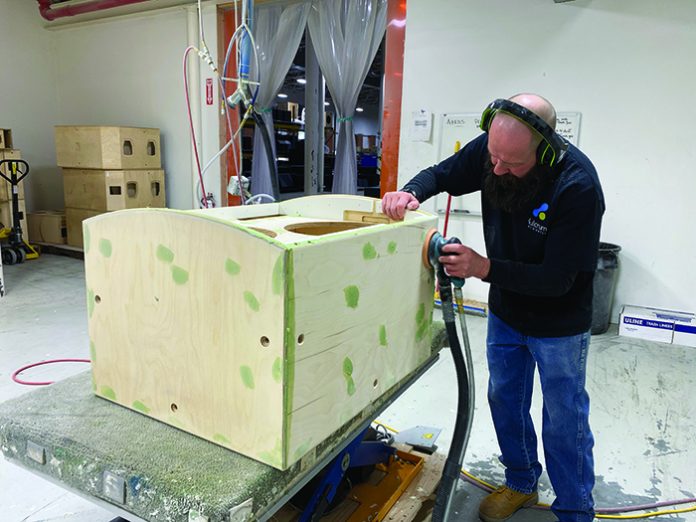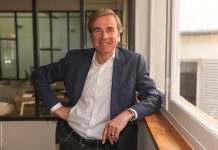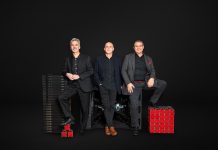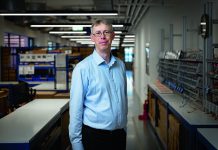U.S. loudspeaker manufacturer, Fulcrum Acoustic, has announced a number of new distribution partnerships in EMEA in recent months. MONDO-DR caught up with company President, Stephen Siegel, to find out what lies behind the brand’s expansion in the region.
What are the origins of Fulcrum Acoustic?
Chris Alfiero, David Gunness and I formed Fulcrum Acoustic back in 2008. Dave was already well known for his loudspeaker designs for Electro-Voice and EAW; Fulcrum Acoustic was created as a vehicle for pursuing his ideas for marrying innovative acoustical design with the latest DSP techniques. Since that time, we have pioneered important new technologies and earned a place in many stadiums, theme parks, houses of worship, theatres and other prestigious venues, with every piece designed and built in Whitinsville, Massachusetts.
Fulcrum Acoustic loudspeakers are a familiar sight in venues across the United States, but until recently we have not seen so much of you in EMEA. What is driving your focus on the region?
It has really been led by the customers. One striking impact of the pandemic is that people are re-evaluating their choices in all areas of their lives. We have been approached by integrators and consultants from Europe and the Middle East who are taking the time to look beyond their usual go-to brands to find solutions that better address specific challenges. To offer a true solution you need strong local support, which is why we started conversations with great partners like XLR in the Benelux countries, Pro Audio & Light Systems in Russia and Ligra in Italy, all of which have the in-house expertise to take care of their customers.
The loudspeaker market is notoriously crowded, with a handful of well-known names and a plethora of smaller brands. How does Fulcrum Acoustic stand out from the pack?
First of all, we’re an installation-focussed loudspeaker brand, not a touring loudspeaker brand dipping a toe into the installation market. That’s an important distinction. From the way our enclosures fit different architectural styles to our install-friendly mounting hardware, you just know that these loudspeakers were designed by someone who has put in the time on the ground to understand the needs of venues and integrators. Beyond that, we’re very much an R&D led company, with important innovations such as our Passive Cardioid Technology, Pattern-Control Coaxial Drivers, Temporal Equalisation and the Occulus Phase Plug under our belts (amongst others). These technologies result in solutions that you won’t find anywhere else. Our products offer a unique value based on innovative solutions.
For those who aren’t familiar with it, how would you summarise Passive Cardioid Technology?
Generally speaking, loudspeakers become progressively less directional with decreasing frequency, so you get a lot of low frequency radiating behind the loudspeaker. This adversely impacts system clarity, speech intelligibility and can adversely affect ‘spill’ of sound outside a venue. In fact, there really is no situation where uncontrolled low frequency coming from the back of loudspeakers is helpful. At subwoofer frequencies, the traditional way to combat this effect is with active cardioid arrays, but these require additional cancellation loudspeakers, as well as additional amplifier and signal processing channels, so you end up with a rather large, complex and expensive solution. David (Gunness) created an acoustical circuit which balances the position of the low frequency driver, the enclosure depth and volume, and a unique arrangement of acoustical elements including rear-mounted ports and calibrated resistive elements. With Passive Cardioid Technology a single loudspeaker can do the work of an active cardioid array in a much smaller footprint and without the extra cost and hassle. This allows integrators to introduce all the benefits of a cardioid system to installations where the space and budget would have never allowed an active cardioid solution.
All of your products are built in the United States. How does that influence the way you work?
To make excellent, durable loudspeakers everything has to be just right, from the raw materials right through to quality assurance, so it makes a lot of sense to retain full control of the whole process. Building our complex enclosures is a highly skilled job, and we’re fortunate to have expert woodworkers who take pride in every joint and seam. Having our own manufacturing facility with close links to the R&D teams also gives us a lot of agility when it comes to custom designs, new product development and fast turnaround times.
The Fulcrum Acoustic range is already quite extensive. How do you decide what products to focus on next?
Many of our products and technologies started out as custom solutions for a specific project. As the company has grown, we have been determined to keep our door firmly wedged open to integrators and engineers, so we sometimes get involved in projects where there’s a very specific requirement that is not truly met by any off-the-shelf loudspeaker. That’s the kind of challenge that gets us fired up! Where we have developed a bespoke solution, sometimes it’s clear that there’s a wider need for the product and it duly takes its place in the line-up. It has become something of a cliché to talk about providing solutions rather than products, but that really is our approach. Each new product provides more options for our customers to pick from when they are devising the best possible system for the space and budget they are working with.
What is Fulcrum Acoustic looking forward to in the next 12 months?
Travelling! We thrive on getting to know our customers and sharing our technologies with them, so I can’t wait to get involved in more product demos in those countries where Fulcrum Acoustic is not so well known yet. It’s one thing to talk about the benefits of our products, but when people can experience them with their own eyes and ears, you get those wonderful lightbulb moments. We also have some important new product developments coming through the pipeline and further distribution partnerships taking shape, so it promises to be an exciting time for the team.
This article first appeared in issue 31.6 of MONDO-DR, which you can read below –





